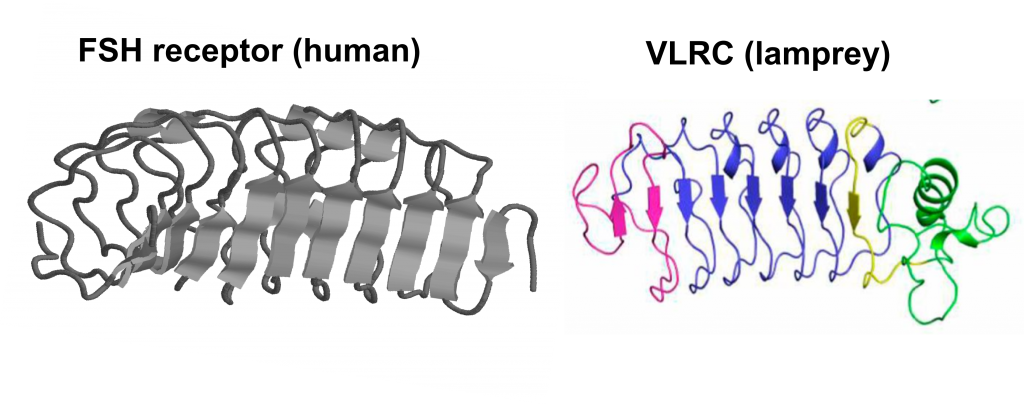That sharks share the antibody structure with men is already known for quite some time. Whether other animals, earlier in evolution, have also antibodies and T cells like ourselves has been a open question. The answer is yes, but….
An article in PNAS from the Max-Planck-Institute for Immunobiology, Freiburg, Germany (with contributions from the Emory Univ. Atlanta, the Univ. of Maryland and from National Library of Medicine, NIH) reports in detail about one (of three) antigen receptors in lampreys. These jawless fishes (whether they belong to vertebrates is open to discussion) have a repertoire of different receptors, but unlike antibodies where the variable region is composed of variable and constant elements and linked by diversity and joining elements they are build of a variable number of leucin-rich repeats which form a structure which is reminescent of glycoprotein receptors with a very similar organization:

The variability is due to different numbers of repeats which is a novel mechanism for antigen receptors.
You will also find a number of references to the immune system of lampreys (and of hagfish). This is a very interesting piece of work, in a way undogmatic since they extend the repertoire of possible structures.
Nicely done and highly recommended!